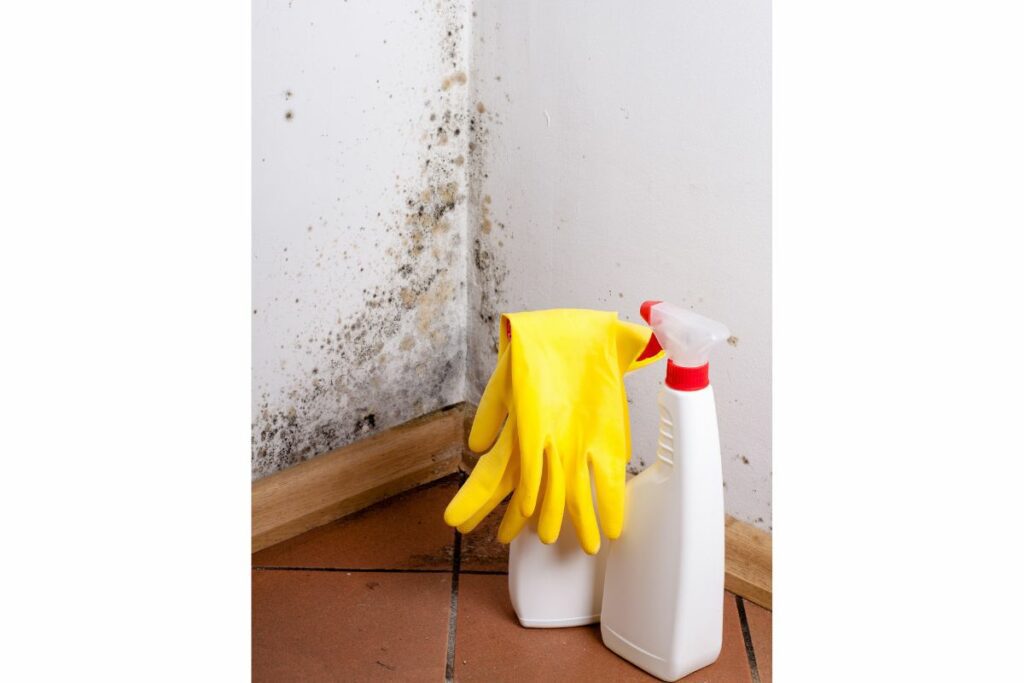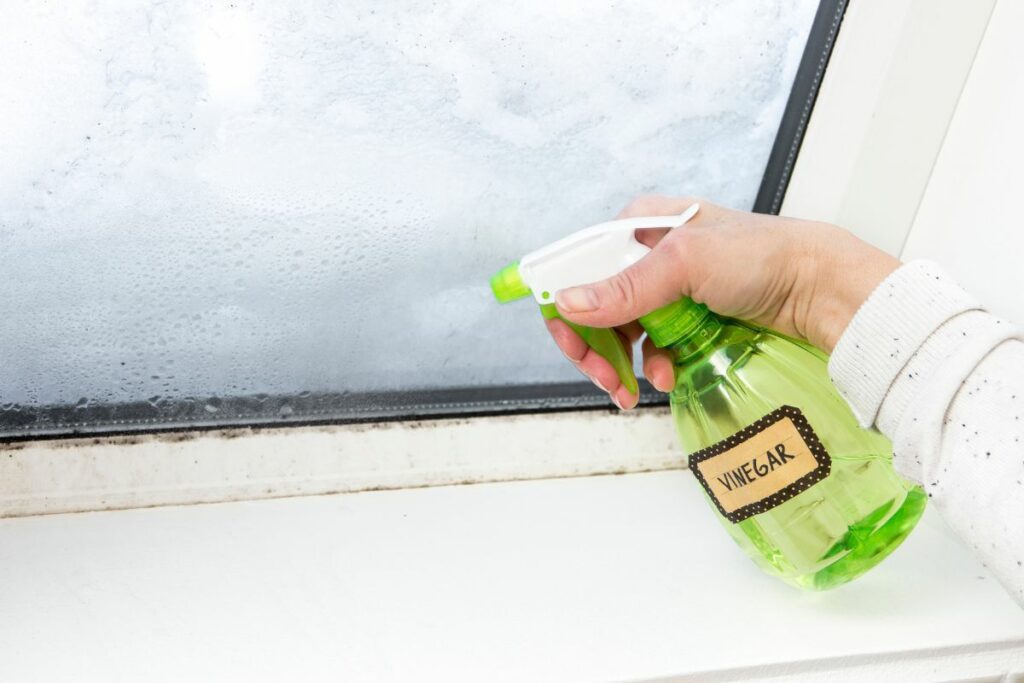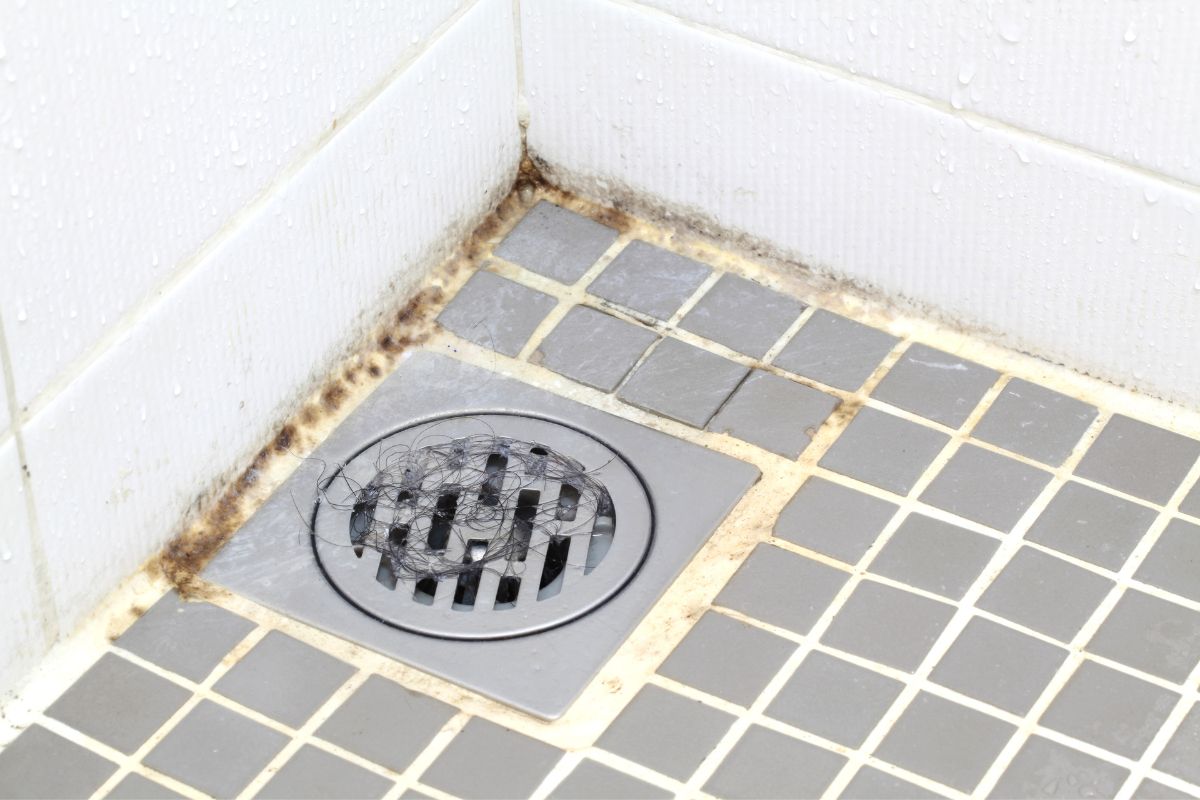There are a few different species of yellow mold that can grow in a bathroom. Most types of mold look particularly bad. Today, I will go over how to clean yellow mold in a bathroom.
As a general rule, use dish detergent, water, and a soft rag to wipe the yellow mold. Before, wiping the mold to remove it, wear a mask, protective goggles, and gloves. After cleaning the mold immediately wash the clothes you were wearing.
There is a range of other cleaners that can be used, and there are some specific tips to clean yellow mold that depend on where it’s growing. Below, I will explain what these are so that you can get rid of yellow mold, and some tips to stop it from coming back.
Step by Step How to Remove Yellow Mold From Your Bathroom
The overall procedure to clean yellow mold is to wipe the area with a cloth, and a cleaner. But, there are a few minor things you should need to be aware of. The cleaners that can be used are:
- Dish detergent and water (for hard surfaces like tiles, and wood)
- Specially made mold cleaners (various different brands)
- Undiluted vinegar (for hard surfaces like tiles, and wood)
- Bleach and water (follow instructions on the bottle)
- Ammonia (50% water and 50% ammonia)
It’s very important not to mix ammonia with any other cleaners. It can create a chemical reaction that produces toxic fumes.
1. Choosing a cleaner and how to apply it

The first step is to choose the type of cleaner you’re going to use. The considerations should be what you have available, and the smell. Overall, dish detergent is typically the best option because you will almost always have some on hand. It doesn’t leave a strong smell. And is very mild.
However, the other options are also good, depending on if you have a preference. The liquid you choose to use can be poured into a bucket, or put into a spray bottle. Either or, is fine. To apply it to the mold use a damp cloth, or spray it on depending on whether you’re using a bucket or a spray bottle.
As mentioned at the top of this article you should wear gloves, a mask, and goggles. The reason is many varieties of mold are toxic. Also when you clean them it can kick up mold spores which can get in your eyes, mouth, and hands.
2. Wiping away the mold

After you’ve applied the cleaner you simply need to wipe it with a cloth. It’s helpful to have a separate bucket of clean water that you wash out the cloth once it gets heavily soiled. Continue wiping it, and washing out the cloth until the area is thoroughly clean.
You can decide to use a plastic brush to scrub the area. It’s not necessary but if you do, DO NOT use a plastic brush on walls, or the grout in between tiles. Walls are made of drywall typically, and it can scratch the paint. Grout can also be damaged with a plastic brush.
After wiping the yellow mold thoroughly and removing it there can still be some yellow residue. Provided, you’ve wiped it thoroughly the mold will be dead. The minor amounts of yellow mold will die, and decompose into dust so will eventually go away on their own. So, don’t be concerned if there are minor yellow areas.
3. Finishing up to stop mold from growing back
Once, you’re done wiping away the mold, it’s best to immediately wash the clothes you were wearing, and the cloths you used. Another good option is to throw away the clothes you used to wipe the mold.
Mold relies on very specific conditions to grow. Overall, damp environments are the most hospitable to mold (source). Therefore, there are a few steps to stop mold from growing back. These are:
- Make sure to keep it well ventilated
- Use a dehumidifier for 30 minutes a day for a few weeks
The thing that causes a bathroom to remain the dampest is the shower. After taking a shower run an exhaust fan if you have one for 10 to 30 minutes. I explained this in detail in this article about how long to run a bathroom exhaust fan.
Open any windows, and the door to the bathroom too, to reduce the humidity in your bathroom as quickly as possible. Over time moisture can seep into the wood and drywall in a bathroom and they can be very damp.
If you run a dehumidifier for 30 minutes a day for a few weeks, it will eventually suck out all of this moisture and make your bathroom far drier and much less hospitable to mold.
What Does It Mean When Mold Is Yellow
There are a few different colors of mold, and black and dark green are the most common. Yellow mold stands out and looks very unusual. So, here’s what it means if you have yellow mold.
Overall, if mold is yellow it doesn’t mean anything and is simply a specific species of mold. Overall, it’s luck whether the species of mold that takes root is yellow or a different color. There are many different varieties of mold. They are spread through spores that are suspended in the air.
The way that mold spores are spread relies on the spam approach. Where many thousands of spores are released. Most mold spores will not land anywhere where they can grow.
But, if they do happen to land in a moist environment with a food source – such as wood they will take root, and begin to grow. So, whether a mold in your home is yellow or a different color is random.
What Kills Mold Better Bleach or Vinegar

There are a few different cleaners that can be used to remove mold. Two well-known ingredients are bleach and vinegar. This is which one works better to kill mold: bleach or vinegar.
In general, vinegar kills mold better than bleach. Vinegar is acidic and has a pH of 2 to 3. Whereas, bleach is not acidic, but, contains active ingredients such as chlorine that make it difficult for mold to grow. Bleach does not kill mold. Vinegar does but not all types of mold.
Wiping away mold and using cleaners like detergent does a lot of damage to the mold. Although the microscopic roots remain, typically a mold plant will not have enough strength to grow back after it has been wiped away, and hit with a cleaner. So, generally, using the cleaning method described above is enough to keep mold away for good.

Amos Christen graduated with a bachelor’s degree in Interior Design from Drexel University — Philadelphia, PA. Since 2003, Amos has worked with top interior design professionals in this area, including architects and interior/graphic/lighting designers. As a skilled interior designer, Amos Christen is highly versed in fine arts and crafts and uses that to supplement his main area of expertise. He often publishes articles related to home décor on several websites, including Sprucetoilets.com, Sprucebathroom.com, and Mybesuitedhome.com. He also contributes to leading interior design magazines.
